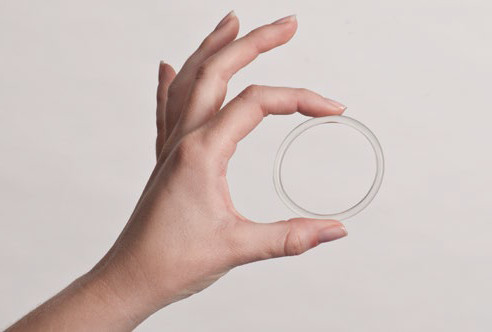Does the NuvaRing Contraceptive Harm the Vaginal Microbiome?
Effective contraception is important, but so is a healthy vaginal microbiome. Ideally, our chosen contraceptive method ticks both boxes! This post reports some recent findings on the impact of the NuvaRing and the vaginal microbiome…with a postscript on vestibulodynia right at the end.
What is the NuvaRing?
The NuvaRing is a form of contraception we could call “The Pill For Your Vagina”. It is a combined contraceptive, just like the oral contraceptive pill (OCP). Like the OCP, it contains an estrogen component and a progestogen component. Unlike the OCP, however, it is inserted into the vagina. Choosing contraception is hard, and one of the many factors we need to consider is its potential impact on the vaginal microbiome. We know that both the OCP and the copper IUD can impact the vaginal microbiome. What about the NuvaRing? Could it be harmful, or even beneficial, to vaginal health by changing the vaginal microbiome? A recent study investigated this.
What does the NuvaRing do to vaginal lactobacilli?
The study was in 20 young women (under 30). It found that after 2 months of the NuvaRing, vaginal lactobacillus did not significantly change – it remained dominant at ~98% of the microbiome. A benefit of this study was that it was longitudinal in design. It followed women over time and measured their microbiome before they began the NuvaRing and once they were established on it. Unlike some other studies that are cross-sectional in design, it didn’t just take a group of women using the NuvaRing and investigate their microbiomes on a single occasion. What this means is it is more likely that the findings reflect a cause-effect relationship. That is, there is a good chance that the NuvaRing does have an influence in maintaining a healthy vaginal microbiome.
Can we trust these findings?
A weakness of this study is the type of technology used to assess the vaginal microbiome. It was 16SrRNA rather than the more specific shotgun metagenomics. While we can be confident in the conclusions about lactobacillus overall – that is, that Lactobacillus levels don’t decrease with the use of the NuvaRing – we need to hold lightly to the results about the specific species. Although the study found that Lactobacillus crispatus – the “Holy Grail” of a healthy vaginal microbiome” did not reduce relative to other less beneficial species, like L. iners, 16SrRNA is not as accurate as metagenomics at identifying bacteria at the species level. It’s therefore possible that levels of L. crispatus changed. However, overall, it was comforting to see that Lactobacillus dominance – important for a healthy vagina – was not compromised. In other words, the NuvaRing does not seem to predispose to bacterial vaginosis, or BV. However, 16SrRNA is not the technology of choice when looking at fungi – i.e. Candida. So even if the NuvaRing did not reduce healthy Lactobacilli, we still don’t know if it can promote fungal colonization of the vagina, leading to vaginal candidiasis or thrush.
How can you tell if these results are likely to apply to you?
We can’t generalize these results to anyone outside of the group tested. For example, if you are not Caucasian, or if you are perimenopausal or a trans male, we don’t know if these results would be likely to apply to you. It also used a group of women without infection at the time. The results therefore don’t tell us whether NuvaRing would likely be helpful or harmful if you are a recurrent BV sufferer (although findings from a different study of Rwandan BV sufferers would suggest benefit).
What about if you have vestibulodynia, or a history of vaginal infections?
And here’s an intriguing side note that creates more questions than answers. They included just one women with vestibulodynia (seems strange, but they were probably struggling to recruit, and one strength of the study is they did manage to recruit the numbers they projected as required for accurate stats. Only this woman showed an increase in bacterial diversity while using the NuvaRing. (This is a bad thing; a healthy vaginal microbiome is one with very low diversity). The authors tell us that not only did she have vestibulodynia, but she had a “history of recurrent infection”. This is super common in my patients! But we don’t know what kind of infection e.g. thrush or BV. However, if her diversity increased – which tends to move you in the direction of BV – this could make us a little cautious. Perhaps we can’t apply the findings of “Nuvaring maintains a healthy microbiome” to women with a history of infection.
So which contraception should you choose, and how do they differ with their impact on vaginal health? This is a very individual situation, and I would be delighted to help you weigh up your options – just book a Tele-Health session here.

